 (São Paulo) Governador André Franco Montoro
(Cumbica)/ Guarulhos International Airpot
(São Paulo) Governador André Franco Montoro
(Cumbica)/ Guarulhos International Airpot
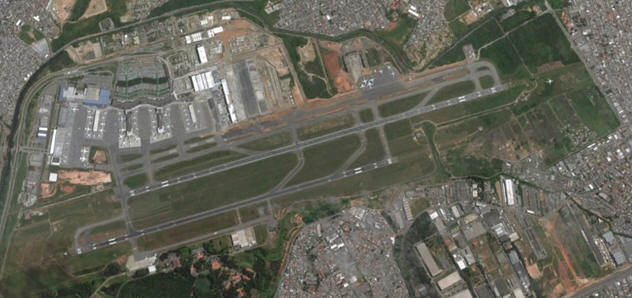 Sao Paulo is Brazil's largest city,
thus has more air traffic. It was clear that Congonhas airport could
not support all traffic and the airport was too small to receive
large aircraft. The alternatives for large jets were land in
Campinas or Rio de Janeiro. On January 20, 1985 one Varig's
Boeing 747-200 coming from New York, inaugurated Guarulhos
International Airport. Thereafter Guarulhos airport was
gradually receiving international flights from Viracopos and
Galeão. In the 90's came Swissair, Lufthansa, KLM, Alitalia,
Korean Air and JAL.When Pan Am ceased, American Airlines took
its place. The same happened with Canadian, who was replaced by
Air Canada.
Sao Paulo is Brazil's largest city,
thus has more air traffic. It was clear that Congonhas airport could
not support all traffic and the airport was too small to receive
large aircraft. The alternatives for large jets were land in
Campinas or Rio de Janeiro. On January 20, 1985 one Varig's
Boeing 747-200 coming from New York, inaugurated Guarulhos
International Airport. Thereafter Guarulhos airport was
gradually receiving international flights from Viracopos and
Galeão. In the 90's came Swissair, Lufthansa, KLM, Alitalia,
Korean Air and JAL.When Pan Am ceased, American Airlines took
its place. The same happened with Canadian, who was replaced by
Air Canada.
In 1992 Terminal 2 was inaugurated, increasing the capacity to
15 million passengers per year. In February, 2012 the Terminal 4
was inaugurated, initially receiving flights from WebJet. Also
in February, Brazilian government
granted the airport to privet exploration with the promise of
expanding and refurbishing the airport. The consortium that took
over the airport is formed by Grupo Invepar and ACSA. The plan
is to build a new terminal and expand capacity to 42 million
passengers per year. In addition, the airport would have 22 new
fingers, 36 aircraft parking spaces and 10,000 car parking
spaces. The runway were adapted to receive aircraft such as A380
and B747-8. By 2022 the airport should also have a shopping
center and hotel.
The Terminal 3 was inaugurated on May 11, 2014 with flights from
Lufthansa, Swiss and Tap. Air Canada, Air China began operating
in the terminal on May 18, and Emirates Airlines, Turkish and
United on May 25. Air France, Alitalia, KLM, Ethiad, Qatar,
Singapore and Korean Air moved to the new Terminal in July and
British and Iberia in August.
Founded:
January, 1985
ICAO Code: SBGR
IATA Code: GRU
Runways Length: 3 km and 3,7 km
Passengers Capacity per year: 42 million
Passengers Statistics: 41 million
Distance from Downtown: 23 km
For further information about Guarulhos Airport, please click here!
 (Campins) Viracopos
International Airport
(Campins) Viracopos
International Airport
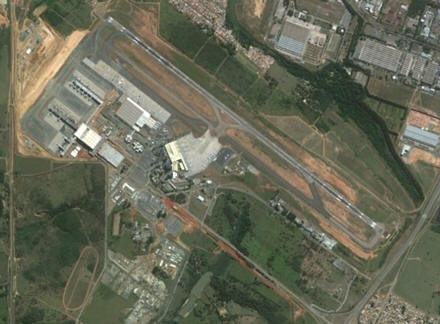 The airport was built as an
alternative to Galeão airport, which was the only one able to
receive large jets like Boeing 707, DC-8, Comet, V-10, Convair
880 and Convair 990. Despite be in a location that is hard to
occur bad weather, the airport is very far from São Paulo. But
many airlines used to land at Viracopos after Galeão like Pan Am,
Braniff, Lufthansa, Air France, Tap, Alitalia, KLM, Swissair,
SAS and Iberia. With the inauguration of Guraulhos airport,
Viracopos become a "ghost airport" and remained so until the
arrival of Azul. Viracopos become Azul's main hub and other
airlines like Gol and Tam launched new flight there too.
The airport was built as an
alternative to Galeão airport, which was the only one able to
receive large jets like Boeing 707, DC-8, Comet, V-10, Convair
880 and Convair 990. Despite be in a location that is hard to
occur bad weather, the airport is very far from São Paulo. But
many airlines used to land at Viracopos after Galeão like Pan Am,
Braniff, Lufthansa, Air France, Tap, Alitalia, KLM, Swissair,
SAS and Iberia. With the inauguration of Guraulhos airport,
Viracopos become a "ghost airport" and remained so until the
arrival of Azul. Viracopos become Azul's main hub and other
airlines like Gol and Tam launched new flight there too.
In 2010 Viracopos returned to receive regular international
flights through Tap.
Founded:
October, 1960
ICAO Code: SBKP
IATA Code: VCP
Runways Length: 3,2 km
Passengers Capacity per year: 14 million
Passengers Statistics: 8 million
Distance from Downtown: 14 km (Campinas) / 78 km (São
Paulo)
For further information about Viracopos Airport, please click here!
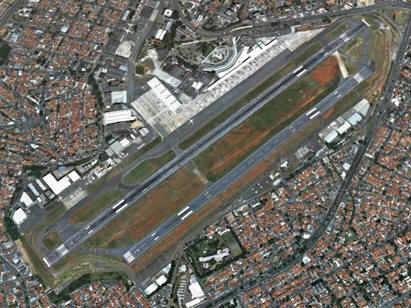 Congonhas was created to replace
Campos de Marte airport. Congonhas received both domestic and
international flights. Airlines like Lufthansa, Air France,
Iberia, Pan Am and Braniff landed at Congonhas with
Constellations, DC-6 and DC-7. But the airport its too small to
receive large jets like Boeing 707 and DC-8. Thus most of
international flight went to Galeão or Viracopos airport. When
Guarulhos airport was created, Congonhas become empty, operating
only regional flights and between São Paulo and Rio de Janeiro.
In the 90's the airport returned to receive jets like Fokker 100
and Boeing 737. Although receive only domestic flights, Cogonhas
is totally saturated nowadays.
Congonhas was created to replace
Campos de Marte airport. Congonhas received both domestic and
international flights. Airlines like Lufthansa, Air France,
Iberia, Pan Am and Braniff landed at Congonhas with
Constellations, DC-6 and DC-7. But the airport its too small to
receive large jets like Boeing 707 and DC-8. Thus most of
international flight went to Galeão or Viracopos airport. When
Guarulhos airport was created, Congonhas become empty, operating
only regional flights and between São Paulo and Rio de Janeiro.
In the 90's the airport returned to receive jets like Fokker 100
and Boeing 737. Although receive only domestic flights, Cogonhas
is totally saturated nowadays.
Founded:
April, 1936
ICAO Code: SBSP
IATA Code: CGH
Runways Length: 1,9 km and 1,4 km
Passengers Capacity per year: 19 million
Passengers Statistics: 20 million
Distance from Downtown: 10 km
Airlines:
Azul,
Gol,
Latam
Historical Airlines:
Avianca Brasil,
Real-Aerovias,
Transbrasil,
Panair do Brasil, NYRBA,
Vasp,
Varig,
Cruzeiro,
Pan Am,
Lufthansa,
Air France,
Iberia,
Pan Am, Alitalia,
Aerolineas Argentinas,
Lan Chile, LAB,
Braniff, APSA, Viasa,
Avianca
 (Rio de Janeiro)
Antônio Carlos Jobim/Galeão International Airport
(Rio de Janeiro)
Antônio Carlos Jobim/Galeão International Airport
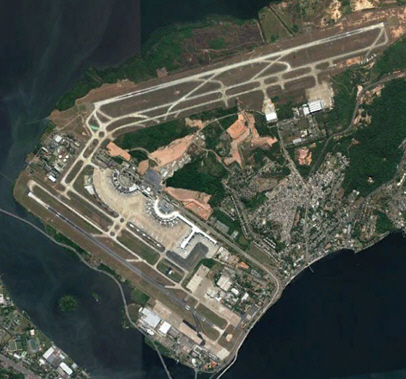 Galeão is the main airport of Rio de
Janeiro and has the longest runway in Brazil and one of the
largest in the world. It is located on Ilha do Governado (Governor's
Island), where moored boats like galleons. Galeão was
inaugurated in 1952 and became Brazil's main internationaç
airport. It was one of the few airports in the world that
received Concorde, by Air France from 1976 to 1982.
Galeão is the main airport of Rio de
Janeiro and has the longest runway in Brazil and one of the
largest in the world. It is located on Ilha do Governado (Governor's
Island), where moored boats like galleons. Galeão was
inaugurated in 1952 and became Brazil's main internationaç
airport. It was one of the few airports in the world that
received Concorde, by Air France from 1976 to 1982.
On January 20, 1977 inaugurated the new terminal, the largest in
Brazil at that time. The old terminal is now used for cargo.
Without an airport to receive large aircraft in São Paulo,
Galeão received almost all international flights from Brazil.
With the opening of Guarulhos airport almost all international
airlines abandoned Galeão.
In 2004 with the restriction in Santos Dumont Airport, Galeão
received lots of domestic flight and with more traffic the
airport also attracted new international flights.
In 2009 the restriction to Santos Dumont airport was undone, but
Galeão continues to increase traffic and received new
international airlines like Emirates and others airlines that
had left the airport like KLM, Lufthansa and Alitalia.
In 2011 many airlines such KLM, Lufthansa, Alitalia and Avianca
announced their return to Galeão, due to the increase in air
traffic in Rio, the World Cup and the Olympic Games in Brazil.
In November 2013, the privatization of the airport was announced.
Odebrecht and Changi Airport Group have earned the right to run
the airport for 25 years, after paying R$ 19 billion to the
Brazilian government. On May 19, 2016 the airport inaugurated
the expansion of Terminal 2, known as "Píer Sul," a space with
100 thousand square meters and 26 new fingers, increasing the
airport capacity by 65%. All international flights gradually
moved into the new space.
Founded:
February, 1952
ICAO Code: SBGL
IATA Code: GIG
Runways Length: 4,2 km and 3,1 km
Passengers Capacity per year: 30 million
Passengers Statistics: 17 million
Distance from Downtown: 12 km
For further information about Galeão Airport, please click here!
 (Rio de Janeiro) Santos
Dumont Airport
(Rio de Janeiro) Santos
Dumont Airport
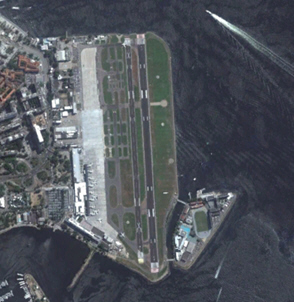 For many its the most
beautiful airport in the world. Santos Dumont airport
construction began in 1934 and it was inaugurated in
1936 with a Vasp's flight between Rio de Janeiro and Sao
Paulo with two Junkers 52.
For many its the most
beautiful airport in the world. Santos Dumont airport
construction began in 1934 and it was inaugurated in
1936 with a Vasp's flight between Rio de Janeiro and Sao
Paulo with two Junkers 52.
After the inauguration of Galeão airport, most of
flights left Santos Dumont and it stayed only with
turbo-propellers aircrafts. The most famous one was the
Electra II, which operated Rio - São Paulo flight until
1992. In the 90's turbo-propellers were replaced by
Boeing 737, Fokker 100 and Airbus A319.
In 2004 the airport was restricted only to regional
flights and flights to Congonhas. But the restriction
was scrapped in 2009.
Founded:
1936
ICAO Code: SBRJ
IATA Code: SDU
Runways Length: 1,3 km and 1,2 km
Passengers Capacity per year: 9,9 million
Passengers Statistics: 9 million
Distance from Downtown: 5 km
Airlines:
Latam, Gol,
Azul, Passaredo
Historical Airlines:
Avianca,
Real-Aerovias,
Transbrasil,
Panair do Brasil, NYRBA,
Vasp,
Varig,
Cruzeiro,
Pan American,
Trip,
Team, WebJet
 Salgado Filho
International Airport (Porto Alegre)
Salgado Filho
International Airport (Porto Alegre)
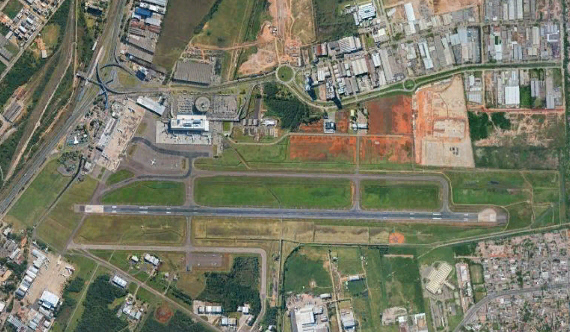 Founded:
1940
Founded:
1940
ICAO Code: SBPA
IATA Code: POA
Runways Length: 2,2 km and 1,5 km
Passengers Capacity per year: 15 million
Passengers Statistics: 8 million
Distance from Downtown: 7 km
Airlines:
Aerolineas Argentinas, Azul,
Copa,
Gol,
Passaredo,
Latam,
Tap
 Hercílio Luz
International Airport (Florianópolis)
Hercílio Luz
International Airport (Florianópolis)
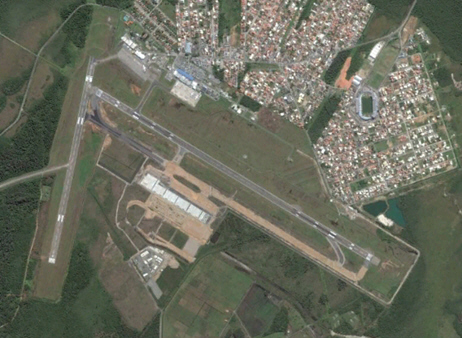 Founded:
1945
Founded:
1945
ICAO Code: SBFL
IATA Code: FLN
Runways Length: 2,3 km and 1,5 km
Passengers Capacity per year: 4 million
Passengers Statistics: 3 million
Distance from Downtown: 11 km
Airlines:
Azul,
Gol,
Latam,
Aerolineas Argentinas
 Afonso Pena
International Airport (Curitiba)
Afonso Pena
International Airport (Curitiba)
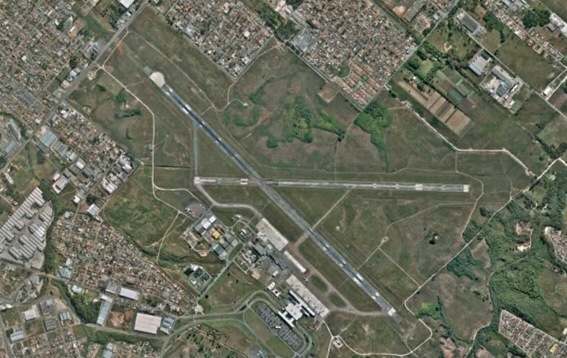 Founded:
1945
Founded:
1945
ICAO Code: SBCT
IATA Code: CWB
Runways Length: 2,2 km and 1,8 km
Passengers Capacity per year: 7 million
Passengers Statistics: 6 million
Distance from Downtown: 15 km
Airlines:
Azul,
Gol,
Latam, Passaredo,
Copa
 Tancredo Neves/Confins
International Airport
(Belo Horizonte)
Tancredo Neves/Confins
International Airport
(Belo Horizonte)
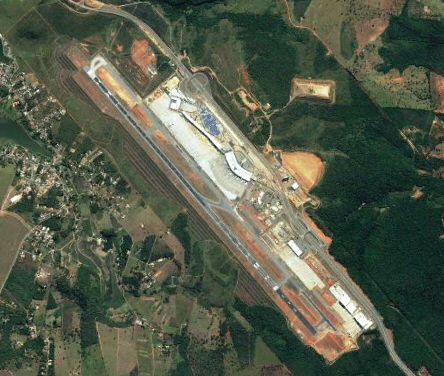 Founded:
1984
Founded:
1984
ICAO Code: SBCF
IATA Code: CNF
Runways Length: 3 km
Passengers Capacity per year: 22 million
Passengers Statistics: 10 million
Distance from Downtown: 20 km
Airlines:
Azul, Gol,
Latam,
American Airlines, Copa,
Tap
For further information about Confins Airport, please click here!
 Juscelino Kubitschek
International Airport (Brasília)
Juscelino Kubitschek
International Airport (Brasília)
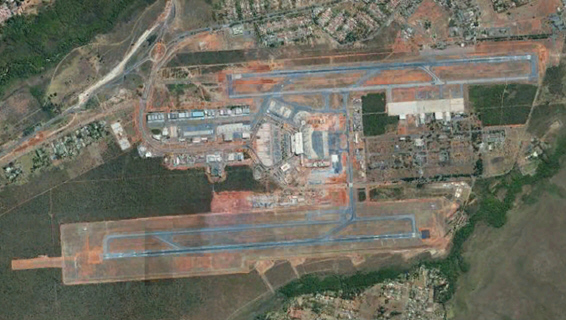 Founded:
1957
Founded:
1957
ICAO Code: SBBR
IATA Code: BSB
Runways Length: 3,3 km and 3,2 km
Passengers Capacity per year: 21 million
Passengers Statistics: 17 million
Distance from Downtown: 10 km
For further information about Brasília's Airport, please click here!
 Dep. Luís
Eduardo Magalhães International Airport (Salvador)
Dep. Luís
Eduardo Magalhães International Airport (Salvador)
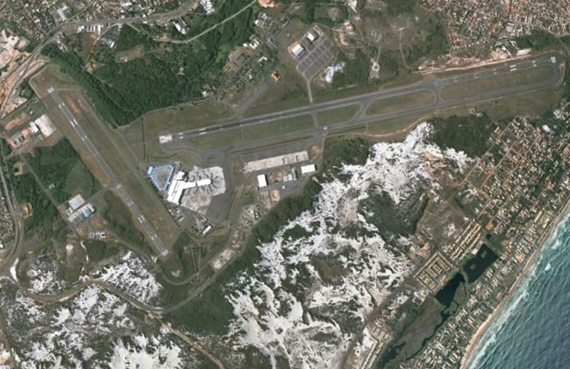 Founded:
1925
Founded:
1925
ICAO Code: SBSV
IATA Code: SSA
Runways Length: 3 km and 1,5 km
Passengers Capacity per year: 10 million
Passengers Statistics: 8 million
Distance from Downtown: 21 km
Airlines: Azul,
Gol, Passaredo,
Latam,
Aerolineas Argentinas,
Air Europa,
American Airlines,
Condor, Tap
 Guarapes Gilberto
Freyre International Airport (Recife)
Guarapes Gilberto
Freyre International Airport (Recife)
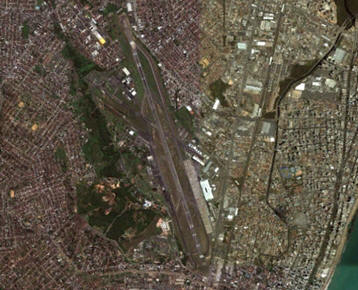 Founded:
1958
Founded:
1958
ICAO Code: SBRF
IATA Code: REC
Runways Length: 3,3 km
Passengers Capacity per year: 16 million
Passengers Statistics: 8 million
Distance from Downtown: 10 km
Airlines: Azul, Gol,
Latam,
American Airlines,
Copa,
Tap
 São Gonçalo do
Amarante International Airport (Natal)
São Gonçalo do
Amarante International Airport (Natal)
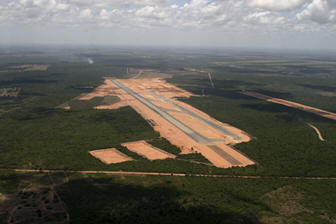 Founded:
2014
Founded:
2014
ICAO Code: SBSG
IATA Code: NAT
Runways Length: 3 km
Passengers Capacity per year: 6 million
Passengers Statistics:
Distance from Downtown: 40 km
Airlines: Azul,
Gol,
Latam,
Tap
 Pinto Martins
International Airport
(Fortaleza)
Pinto Martins
International Airport
(Fortaleza)
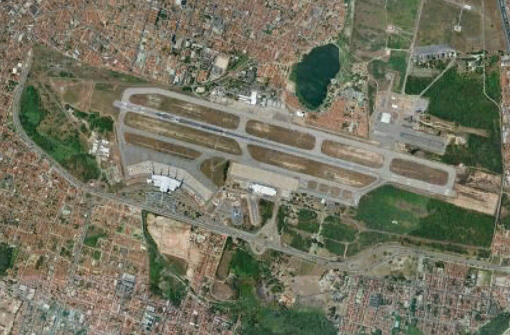 Founded:
1966
Founded:
1966
ICAO Code: SBFZ
IATA Code: FOR
Runways Length: 2,5 km
Passengers Capacity per year: 6 million
Passengers Statistics: 6 million
Distance from Downtown: 7 km
Airlines: Azul,
Gol,
Latam,
Delta,
Tap
 Eduardo
Gomes International Airport (Manaus)
Eduardo
Gomes International Airport (Manaus)
![[Aeroporto+de+Londrina.jpg]](http://1.bp.blogspot.com/_uRX1wGVlxMw/SndSPjHlYVI/AAAAAAAAAkc/ai9rPoYkpD0/s1600/Aeroporto+de+Londrina.jpg) Founded:
1976
Founded:
1976
ICAO Code: SBEG
IATA Code: MAO
Runways Length: 2,7 km
Passengers Capacity per year: 6 million
Passengers Statistics: 3 million
Distance from Downtown: 9 km
Airlines:
Azul, Gol,
Latam,
Copa, Delta
 Val de Cans
International Airport (Belém)
Val de Cans
International Airport (Belém)
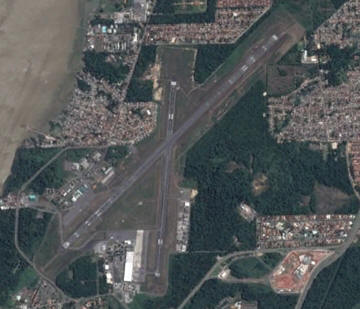 Founded:
1959
Founded:
1959
ICAO Code: SBBE
IATA Code: BEL
Runways Length: 2,7 km and 1,8 km
Passengers Capacity per year: 7 million
Passengers Statistics: 3 million
Distance from Downtown: 9 km
Airlines:
Azul,
Gol,
Latam,
Sete,
Air Caribes, Surinam
Updated: 2019
